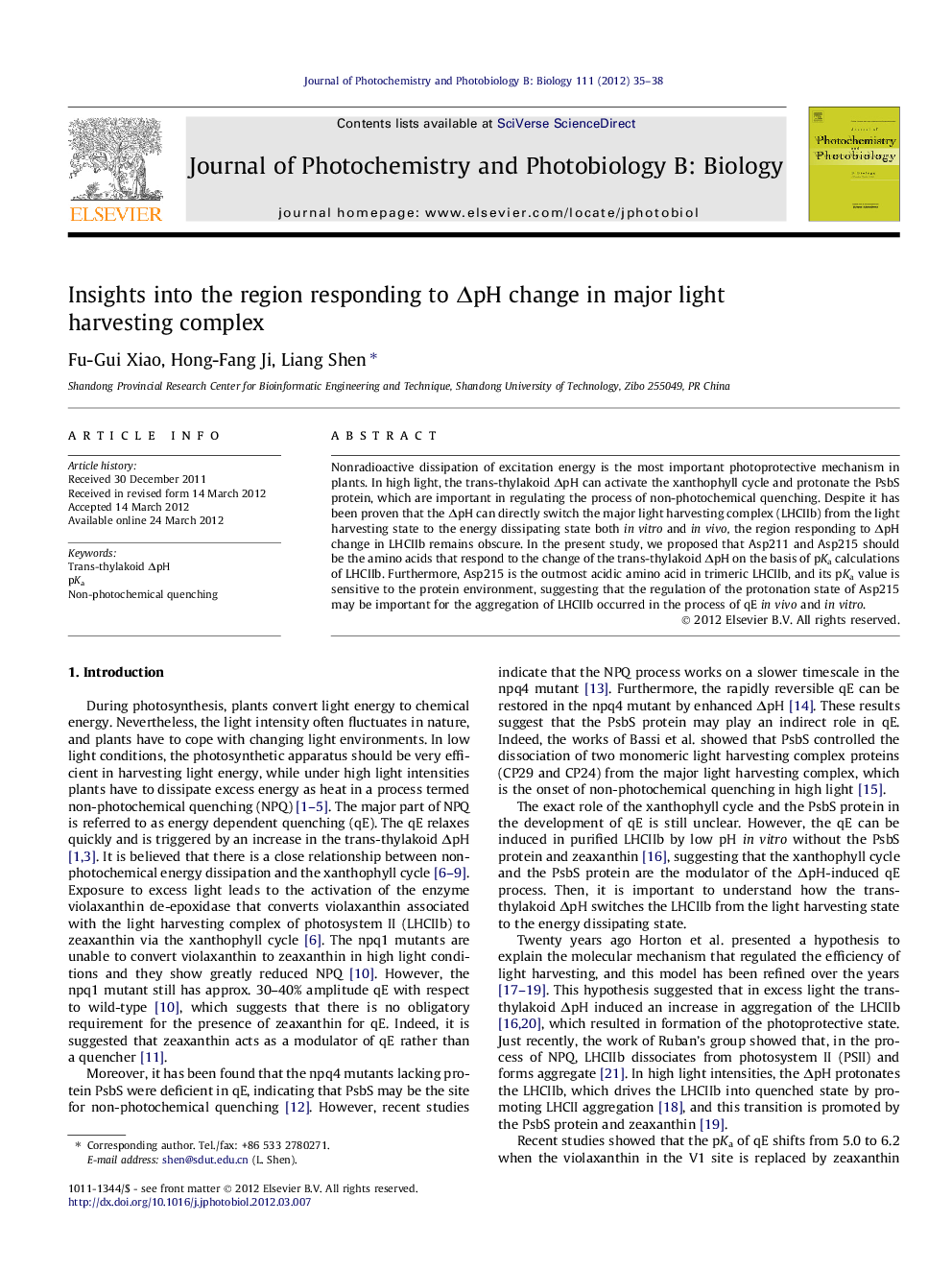| Article ID | Journal | Published Year | Pages | File Type |
|---|---|---|---|---|
| 29532 | Journal of Photochemistry and Photobiology B: Biology | 2012 | 4 Pages |
Nonradioactive dissipation of excitation energy is the most important photoprotective mechanism in plants. In high light, the trans-thylakoid ΔpH can activate the xanthophyll cycle and protonate the PsbS protein, which are important in regulating the process of non-photochemical quenching. Despite it has been proven that the ΔpH can directly switch the major light harvesting complex (LHCIIb) from the light harvesting state to the energy dissipating state both in vitro and in vivo, the region responding to ΔpH change in LHCIIb remains obscure. In the present study, we proposed that Asp211 and Asp215 should be the amino acids that respond to the change of the trans-thylakoid ΔpH on the basis of pKa calculations of LHCIIb. Furthermore, Asp215 is the outmost acidic amino acid in trimeric LHCIIb, and its pKa value is sensitive to the protein environment, suggesting that the regulation of the protonation state of Asp215 may be important for the aggregation of LHCIIb occurred in the process of qE in vivo and in vitro.
► Region responding to ΔpH change in LHCIIb remains obscure. ► pKa of acidic residues in LHCIIb lumen side was calculated. ► Asp211 and Asp215 may respond to ΔpH change in LHCIIb. ► Asp215 is important for LHCIIb aggregation in qE.
